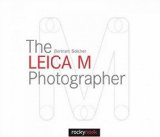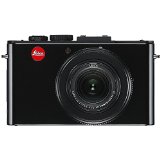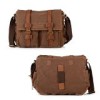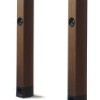The Leica M Photographer: Photographing with Leica’s Legendary Rangefinder Cameras Reviews
The Leica M Photographer: Photographing with Leica’s Legendary Rangefinder Cameras
What it is and what it isn’t.
This not a camera manual for the Leica M, nor is it a book that will teach you photography. Nevertheless, in Bertram Solcher’s book you will learn a whole lot about your camera and how to use it, and about the art and craft of photography. This book contains a collection of illustrated essays that are meant to reveal the secrets of working with a rangefinder camera. To be more precise, with the best camera ever made. The book’s ultimate goal is to ignite y
List Price: $ 44.95
Price:
Leica DLUX 6 10-megapixel Digital Camera
- Newly designed, extremely fast Leica DC-Vario-Summilux 4.7-17.7 mm f/1.4-2.3 ASPH. Sets a new milestone in compact cameras with outstanding speed throughout its entire range of focal lengths from 24 to 90 mm (35 mm equivalent).
- Intuitive handling and clearly laid out functions makes the Leica D-LUX 6 a joy to use, providing creative freedom.
- The new Leica D-LUX 6 combines classic elegance with premium materials. Finished completely in black, only a few chromed elements set discreet counterpoints and refine the clarity of its design.
- Newly developed 10 MP C-MOS sensor.
- 960,000 pixel display.
The Leica D-LUX 6 perfectly represent pre-eminent Leica quality in a compact camera format. Its outstanding lens and the versatile capabilities for creative photgraphy make it the perfect camera for capturing inspiring moments- in the typically brilliant image quality you expect from Leica. This new extremely fast lens makes it particularly suitable for available-light photography and creative experimentation with planes of focus and depth of field. Its full-HD video recording capability and num
List Price: $ 799.00
Price:







And great news: I loved it,
Now, understand … I don’t have a Leica.
But you don’t need a Leica to fall in love with this book.
Because the book is less about the Leica camera as it is about what it is to live the life of a photographer in love with his craft.
It’s important to note up front that the author is more of an everyday photographer, more of a journalistic photographer, more of a street photographer . . . This is not a guy staging elaborate model shoots in Bangaldesh, and he is not roaming the Serengeti looking to photograph lions.
Throughout the book we see him in there with everyday people, in the thick of it, up close … We see him shooting fans watching World Cup soccer. We see him on a magazine assignment, shooting at a polo club. We see him shooting the a Harley Davidson bike rally in Hamburg, Germany.
And again and again, the images he creates are exceptional.
Most of his work is shot at 35mm or 50mm, befitting a photo-journalist and street photographer, and almost all of it is in black and white (sort of a cyanotype, really), though whether black and white or color, what I love most about his photography is that it is never routine. This is a photographer who challenges himself, who experiments and takes chances, and who ultimately creates photographs that are as technically masterful as they are just plain exciting to see. As you read this book you are in the company of an artist. You are seeing what it is to think like a true craftsman.
Indeed, much of the training the book delivers on has to do with how he thought through these photographs and created them.
And again, none of it relies upon carrying a Leica in your hands.
Because as a teacher, Solcher is wonderfully adept. You do get bits and pieces here and there that at first glance seem specific to using a Leica — but don’t skip them: the ideas stand whatever camera you are holding. The technical ideas he relates are universal enough to help any aspiring photographer improve. And the best ideas — given in the form of assignments — are elegant and challenging enough artistically to make this book an inspirational call for us all to push ourselves further as photographers.
One of the greatest lessons I drew from this book was that of seeing how deliberately, how intentionally a professional photographer goes about his task. This is no casual shooter we are encountering here. This is a pro. Yet one of the most accessible, most articulate, most creative professionals on the scene today.
Whether you ever plan to own a Leica, I recommend this book heartily. I believe this book will be a treasure to any ambitious photographer who aspires to capture great photographs that elevate the human experience into the realm of artistry.
– S.
Postscript: As I said at the start of this review, I don’t own a Leica. Yet it’s worth noting that the Fuji X100S or X100T will give you a pretty, pretty, pretty close alternative. When it comes to Bertram Solcher’s delight in sheer portability and stealth, I suspect my Fuji X100T makes for a near enough match, even down to its aperture ring and the rangefinder experience it can provide. And the joys the author expresses at NOT lugging around a heavy, intimidating DSLR are joys I can relate to myself whenever I am walking a city with my circumspect, Leica-inspired Fuji. (Of course, that said . . . If anyone wants to take up a collection to get me a Leica now, I won’t object!)
0
Was this review helpful to you?

|Loving a Camera,
Bertram Solcher’s book is dedicated to the same fine camera. The book is a combination of memoir, instruction manual and portfolio. He offers chapters on selecting gear, planning images, composition and other basic skills, and yet there is little that actually tells you about the Leica M. Each chapter involves a bit of narrative, a photo exercise and a discussion of a particular assignment the author had, either self-created or assigned, and the photographs he made for the assignment. Although he often describes himself as a photo-journalist, from the images in this book, I think of him as a street photographer.
This book practically cried out to be liked; it’s about the affection a photographer has for his camera. Unfortunately, that wasn’t enough to generate a similar affection for me in the book. Perhaps I would have liked the book more if it had detailed the ways that the Leica M could be used differently than other cameras and how those uses could be used to create more effective images than other cameras but the book didn’t. Consider the chapter on rules. The author briefly mentions a few composition rules, like the rule of thirds or those relating to the use of depth of field. His discussion is at best cursory, and then he tells us we don’t have to follow the rules. There is no detail to hone the reader’s skills or understanding of the rules. There is no attempt to relate the rules to the characteristics of the Leica M. If one understands the rule well enough, one doesn’t need to be told they can be broken. Moreover, few of his images are offered to support what he is teaching.
There is plenty of white space in the text. Often this can help to explicate the content of a book, but here it looks like it was just necessary to fill the pages of what might otherwise be a long essay.
As to the images themselves, when I compare them to the works of the great street photographers, I find that they don’t reveal enough, often offering odd angles rather than insights. One of the problems of street photography is that the line between snapshots and art is a fine one, but too often I felt the images were on the wrong side of the line. I did enjoy the images of the author’s daughter which showed the photographer’s love for her. I would much have preferred more images and fewer words, so that I could at least better judge the artistic merit of Solcher’s work.
I had expected that this book might make me want to get my hands on a Leica M again. It did not.
0
Was this review helpful to you?

|Loved it,
Great job – I bought the Kindle version to read and after reading it, I want the printed version too.
Excellent book!
0
Was this review helpful to you?

|Leica D-LUX 6 – first impressions,
While I haven’t worked with the D-LUX 6 all that long, my initial impressions are quite positive. Keeping in mind that my basis for comparison is the Canon S-90, I find that the operational dials are intelligently placed and easy to use and the menu is also very easy to use. The camera has a nice weight and hand feel to it – maybe a little too big to put in your pocket, but it fits nicely into a small belt pouch (the leather Leica case may look great but it’s not the most functional around and is very expensive). The camera operated smoothly: the recovery time between exposures is brief, it is responsive in low light situations, the focus and zoom operations are nearly flawless, and the automatic program seems to be very reliable. Thus far, I’m extremely pleased with the photos I’ve taken. The clarity is excellent – I’m especially impressed with the results with the zoom at mid-range and all the way out, where the S-90 can start to get a little bit muddy. The color palette is warm and natural; no concerns here at all.
While technical experts will have more substantive comments to make, and their guidance will be much more valuable to those who use their cameras in ways that reach way beyond what I do, I nevertheless can tell prospective buyers that this is a fine camera that takes very, very good pictures. In the meantime, for those who are looking for more technical information, I recommend a review posted on the red dot forum, which called the D-Lux 6 “a solid improvement over the D-Lux 5.” The reviewer summarized by saying that “the D-Lux 5 was no slouch, but the improvements Leica has introduced make the upgrade an easy decision. Faster auto focus and operation, a gorgeous LCD screen, improved low light performance, better build quality, and full 1080p HD video are all I could have asked for and more. Sign me up!”
0
Was this review helpful to you?

|The perfect keep-with-you-always camera,
0
Was this review helpful to you?

|An AWESOME enthusiast’s compact camera!,
HOWEVER …
(1) Your money will be wasted on this camera if you are “merely” looking to buy an outstanding point-and-shoot camera. This camera is designed to please the enthusiast who will spend the necessary amount of time required to learn how to master its controls and menus, and who will take advantage of the post-production processes that are available in Adobe Lightroom. For some people, this type of commitment will not be appealing. For others, it will be very rewarding — particularly if you save your images as RAW files. But let me say this: If you’re not interested in learning to use Lightroom (or another sophisticated image processing program), then you are not going to get the most out of this camera. (Nevertheless, this camera shines as an easy-to-use point-and-shoot camera, if that’s how you want to use it.)
(2) The 222-page instruction manual is not exactly inscrutable … nor is it a model of clarity. To use this camera to its fullest potential, you will need to refer to the instruction manual often … and, when you do, you will need to put your thinking cap on to make sense of what you’re reading.
(3) For this price, I believe that the camera should have been equipped with an automatic lens protector. Dealing with the lens cap is no big deal, but I’d prefer not to deal with it at all.
(4) The D-LUX 6’s zoom lens has proven to be perfectly adequate for casual, daily photography, but I tote a Nikon D600 with a 28-300 zoom when I’m traveling/vacationing.
(5) The flash is anemic. It’s OK, but it could be better.
(6) The relationships between the camera’s menus and settings, and the reasons for the strange button assignments, are probably known only to Leica/Panasonic. They don’t hinder your usage of the camera, but they don’t help, either.
Bottom line: This is an extraordinary camera that isn’t much larger than a pack of cigarettes. And — when you consider that it ships with an Adobe Lightroom license — I believe that it is a fair value. (If you already own a copy of Lightroom, then I would suggest that you purchase the Panasonic DMC-LX7 camera instead.) After spending a lot of time with this camera, and capturing a couple of thousand images, I am totally pleased with its performance — but I would have given it only 4-1/2 stars, if Amazon’s rating system had allowed it, for the reasons above.
On another note: I often use the optional, external viewfinder, which is an excellent and very useful accessory. It was a worthwhile purchase for me, but its price-to-value ratio is questionable. For the price of the D-Lux 6 ($800) plus the optional viewfinder ($400), you could buy a very nice, used Nikon D7000 and a new, Nikon telephoto lens.
0
Was this review helpful to you?

|